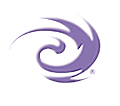 |
 |


|
|
       |
|||
|
|||||||||
|
|
|||||||||
| Related Syntax | |||||||||
| Data type conversion | |||||||||
You can convert data from one type to another in OmniMark in a number of ways.
You can convert a string to an integer value simply by using the string value where an integer is expected. OmniMark coerces the string value to an integer automatically. The string used must contain only decimal digits.
; stream-to-integer.xom
process
local stream foo initial {"6"}
local integer bar initial {7}
set bar to bar + foo
output "Bar = " || "d" % bar
; Output: Bar = 13
You can convert a string representation of a BCD number to a BCD by preceding the string value with the keyword bcd:
; stream-to-bcd.xom
include "ombcd.xin"
process
local stream foo initial {"12.75"}
local bcd bar initial {"0.25"}
set bar to bar + bcd foo
output "Bar = " || "d" % bar
; Output: Bar = 13
You can convert a string representation of a floating point number to a float OMX type using float.
; stream-to-float.xom
include "omfloat.xin"
process
local stream foo initial {"6565.32e+4"}
local float bar
set bar to float foo
output "Bar = " || "d" % bar
; Output: "Bar = 65653200"
You can convert an integer to a string expression using the "d" format item.
; integer-to-string.xom
process
local integer foo initial {6}
output "Foo formatted as a string: " || "d" % foo
; Output: "Foo formatted as a string: 6"
The "d" format item has many format modifiers that allow you to specify how the number is displayed. For instance, to display a number as two hexadecimal digits, you would use the sequence "16ru2fzd". This sequence means:
Thus the following code will print "FD":
process
local integer foo initial {253}
output "Integer formatted as string with hex, uppercase, 2 digits, padded: "
|| "16ru2fzd" % foo
; Output: "Integer formatted as string with hex, uppercase, 2 digits, padded: FD"
You can convert a BCD value to a string using the BCD template formatting language.
For instance, the following code outputs "$5,729.95":
include "ombcd.xin"
process
local bcd total
set total to bcd 5729.95
output "<$,NNZ.ZZ>" % total
You can convert a floating point value to a string using float:
include "omfloat.xin"
process
local stream foo initial {"6565.32e+4"}
local float bar
set bar to float foo
output "d" % bar
; Output: 65653200.000000000000000
To get the ASCII code (or EBCDIC code on machines that use it) for an individual character, you can use the binary operator:
process
local stream foo initial {"G"}
output "The ascii code for "
|| foo
|| " is "
|| "d" % binary foo
|| "."
To output the character that corresponds to an ASCII code, use the "b" format item:
process
local integer foo initial {71}
output "The character corresponding to ascii code "
|| "d" % foo
|| " is "
|| "b" % foo
|| "."
; Output: "The character corresponding to ASCII code 71 is G."
Here is a simple hex dump program that uses some of these conversion methods to print out side-by-side ASCII and hex representations of a file. In the ASCII representation, unprintable characters are represented by periods:
declare #main-input has binary-mode
macro format-2digit-hex is "16ru2fzd" macro-end
process
submit #main-input
find any{1 to 16} => chars
local integer i initial {0}
repeat scan chars
match [" " to "~"]+ => visible
output visible
match any
output "."
again
output " " ||* (16 - length of chars)
repeat scan chars
match any => char
output " " || format-2digit-hex % binary char
increment i
output " -" when i=8
again
output "%n"
You can convert an integer to a BCD by simply putting "bcd" before the integer name, as shown in this program:
; integer-to-bcd.xom
include "ombcd.xin"
process
local integer dollars initial {2}
local bcd total
set total to bcd dollars + bcd 729.95
output "<$NNZ.ZZ>" % total
; Output: "$731.95"
You can convert an integer to a floating point data type by simply putting "float" before the integer name, as shown in this program:
; integer-to-float.xom
include "omfloat.xin"
process
local integer dollars initial {2}
local float total
set total to float dollars + float 729.95
output "$" || "d" % total
; Output: "$731.95"
For information on how to represent hex numbers, octal numbers and others in which you convert a string to a number, see base.
|
Related Syntax base binary |
| ---- |